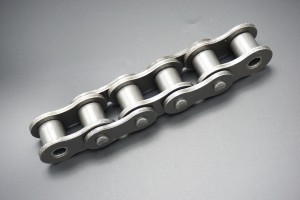If you’re in the market for roller chain for your industrial machinery, you may have come across the terms “40 roller chain” and “41 roller chain.” These two types of roller chain are commonly used in various applications, but what exactly sets them apart? In this blog, we’ll explore the differences between 40 and 41 roller chain to help you make an informed decision for your specific needs.
First and foremost, it’s important to understand that both 40 and 41 roller chain are part of the ANSI (American National Standards Institute) standard roller chain series. This means that they are manufactured to specific dimensions and quality standards, making them interchangeable with other ANSI standard roller chains. However, despite their similarities, there are key differences that set 40 and 41 roller chain apart.
One of the main differences between 40 and 41 roller chain lies in their pitch. The pitch of a roller chain refers to the distance between the centers of adjacent pins, and it plays a crucial role in determining the chain’s strength and load-bearing capacity. In the case of 40 roller chain, the pitch measures at 0.5 inches, while the pitch of 41 roller chain is slightly smaller at 0.3125 inches. This means that 40 roller chain is better suited for applications that require higher strength and durability, while 41 roller chain may be more appropriate for lighter-duty use.
In addition to pitch, another important factor to consider when comparing 40 and 41 roller chain is their respective tensile strengths. Tensile strength refers to the maximum amount of tensile stress a material can withstand without breaking, and it is a critical consideration in determining a roller chain’s suitability for a given application. In general, 40 roller chain tends to have a higher tensile strength compared to 41 roller chain, making it the preferred choice for heavy-duty applications where the chain will be subjected to significant loads and forces.
Furthermore, the dimensions of the individual components of 40 and 41 roller chain differ slightly. For example, the diameter of the rollers on a 40 roller chain is typically larger than that of a 41 roller chain, allowing for better contact and engagement with sprockets. This difference in roller size can affect the overall performance and efficiency of the chain in various applications.
Another important consideration when choosing between 40 and 41 roller chain is the availability of sprockets and other accessories. Since 40 roller chain is more commonly used in industrial settings, it may be easier to find a wide range of compatible sprockets and accessories for 40 roller chain compared to 41 roller chain. This can be a crucial factor in certain applications where specific sprocket sizes or configurations are required.
Ultimately, the choice between 40 and 41 roller chain will depend on the specific requirements of your application. If you need a roller chain that can handle heavy loads and provide reliable performance in demanding conditions, 40 roller chain may be the better option. On the other hand, if your application involves lighter loads and requires a more compact chain design, 41 roller chain may be more appropriate.
In conclusion, while 40 and 41 roller chain are both part of the ANSI standard series, they differ in terms of pitch, tensile strength, component dimensions, and application suitability. Understanding these differences is crucial in selecting the right roller chain for your machinery and equipment. By taking into account the specific requirements of your application and considering the unique characteristics of each type of roller chain, you can make an informed decision that ensures optimal performance and reliability. Whether you choose 40 or 41 roller chain, you can trust that both options are engineered to meet the highest quality and performance standards for your industrial needs.
Post time: Mar-04-2024

